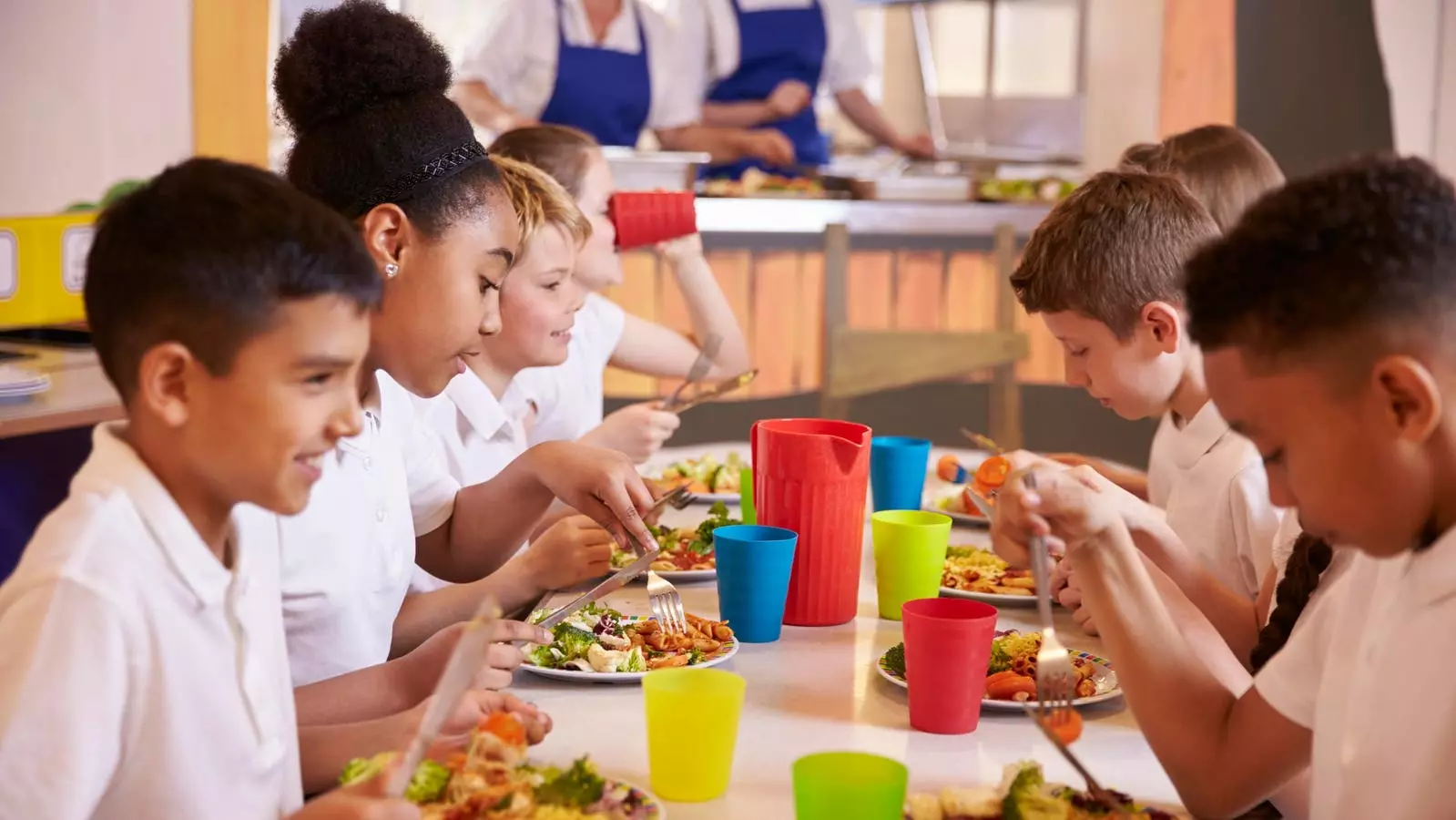When discussing the largest restaurant chains in the United States, most would instinctively think of fast-food giants like McDonald’s or Subway. However, as pointed out by Curt Ellis from FoodCorps, school cafeterias dwarf these commercial establishments in existence and scale. With over seven times as many cafeterias operating across U.S. schools as there are McDonald’s locations, the school food system has a colossal reach. In the previous year, the National School Lunch Program (NSLP) facilitated 4.6 billion lunches, illustrating the sheer volume of food that schools manage. Consequently, the choices made in food procurement by these institutions carry significant implications for local economies, public health, and environmental sustainability.
At the heart of transforming school meals is the concept of farm-to-school programs, an initiative that connects schools directly with local farmers. This approach not only relies on local produce but also emphasizes the importance of teaching students about the origins of their food. Chef Alice Waters, a strong advocate for these initiatives, underscores the accountability that schools have in supporting local agriculture and promoting healthful diets. With over 67,000 schools incorporating such programs, farm-to-school initiatives offer more than just nutritional meals; they foster a sense of community, health awareness, and agricultural education that extends well beyond the cafeteria.
This movement has profound implications; research shows that schools in marginalized communities adopting farm-to-school practices consistently outperform their peers academically. Educators and advocates argue that fostering a connection between food and education can break down barriers and contribute to equitable educational outcomes. Stephen Ritz from Green Bronx Machine emphasizes that public education serves as a significant lever for equity, particularly when tied to community farming efforts.
Despite the promise of farm-to-school initiatives, schools face substantial challenges in implementing these programs. With limited budgets, school food leaders are tasked with providing nutritious meals for millions, often contending with bureaucratic complications and resource constraints. The harsh reality is that many schools simply do not possess the financial capacity or support infrastructure to prioritize farm-to-school efforts. The urgent need for nutritious meals direct from local sources often clashes with the economic limitations faced by these educational institutions.
As Tony Hillery from Harlem Grown points out, schools serve as critical sites where children receive their basic nutrition—often in environments lacking essential arts or physical education. The appetite for quality food is present among parents, yet the crucial question remains: how do schools access and afford it? It is here that the role of external organizations becomes vital.
Various organizations are stepping up to bridge the gap for schools seeking to integrate healthier, locally-sourced meals into their lunch programs. The National Farm to School Network is crucial in connecting stakeholders—including educators, farmers, and policymakers—to share resources that empower schools to adopt sustainable food practices. Helen Dombalis, former Director of the Network, notes that school food programs form the backbone of equity in our food systems.
In addition, innovative programs like the Good Food Purchasing Program promote ethical food sourcing based on values such as health, local economies, and sustainability. Initiatives targeting Indigenous communities, like the Native Farm to School program, further illustrate the diverse approaches being taken to promote food sovereignty and connect traditional practices with school meals.
Globally, various models illustrate the effectiveness of school-supported agriculture. Initiatives like Bright Bites in Canada and School + Home Gardens in the Philippines showcase the trend toward educating students about sustainability and healthy eating habits. Additionally, projects such as SchoolFood4Change in Europe actively work toward developing sustainable food practices across schools, demonstrating that the drive for reform is not confined to the U.S.
Moreover, West Africa’s Home-Grown School Feeding programs serve as an exemplary model of collaborative food systems where the needs of both local farmers and students are prioritized. Such programs showcase how robust supply chains can both nourish children and provide economic support to farmers, creating a circular economy that benefits all stakeholders involved.
As discussions about healthy school meals intensify, particularly during National School Lunch Week and Farm to School Month, it is essential to advocate for increased funding and resources for these initiatives. Both public and private sector investments can enhance school food programs significantly, ensuring that all students have access to nutritious meals sourced from local farms.
Nonprofits and organizations play a critical role in leading efforts toward improved school nutrition; however, a failure to include food systems in educational missions is a disservice to young learners. Furthermore, amplifying student voices in the conversation can drive momentum for change, as they are key stakeholders in the school food dialogue. The current landscape presents a monumental opportunity to foster healthier eating practices in schools while equipping the next generation with the knowledge to make informed food choices.
Revitalizing school cafeterias through farm-to-school initiatives not only enhances nutrition but cultivates a deeper understanding of food systems among students, laying the groundwork for healthier communities and sustainable practices in the future. The collective responsibility to transform school food programs is a step towards a more equitable and nourishing society.


Leave a Reply